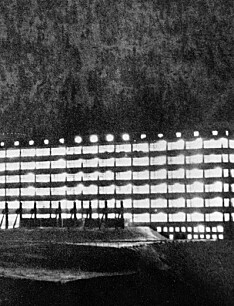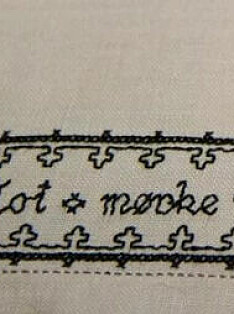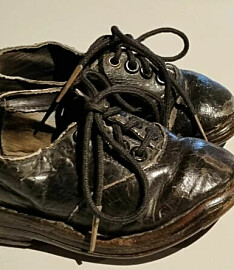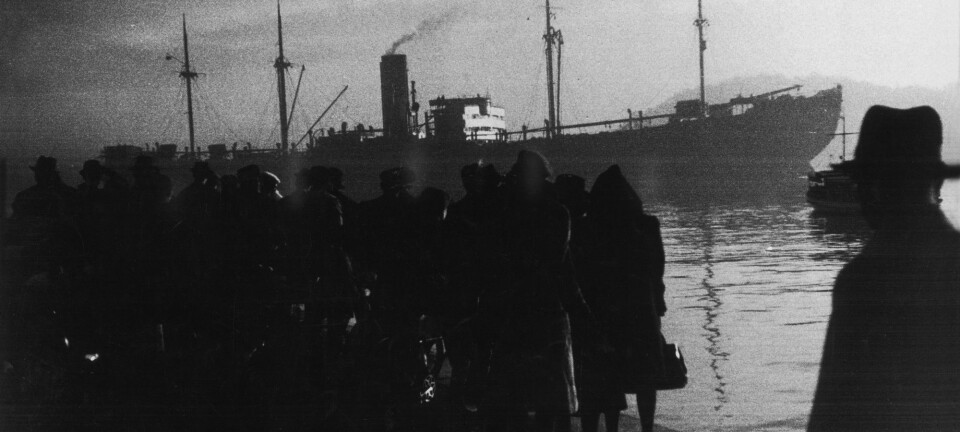
What’s the truth about the Communist resistance in Norway during the second world war?
Few topics are as controversial in the history of WWII in Norway as the Communist sabotage actions and conflicts with the Norwegian Resistance. Recently, the foremost historians in the field met for a debate.
Norwegians will never stop debating Norway's war against Nazi Germany.
Terje Halvorsen is 83 years old and professor emeritus of history at the Inland Norway University of Applied Sciences. Two years ago, he published a book entitled ‘Forfulgt, condemned og fortiet’, Persecuted, condemned and silenced.
Some people would say the title neatly summarizes the true story of the Communist resistance movement from 1940-1945.
The threat to the civilian population
Others will point out that the Norwegian Resistance's work and the Communists' struggle in Norway during the war were two completely different things.
Of all of the occupied lands in Europe, Norway probably had the most German soldiers on its soil per inhabitant. The Norwegian Resistance was concerned that these Nazi-controlled soldiers might seriously attack the Norwegian civilian population.
Apart from some well-known sabotage efforts, such as the heavy water sabotage in Telemark, the Norwegian Resistance was almost passive in the armed resistance struggle. This was true until the end of the war in Norway in 1944 and 1945.
In contrast, Norway’s Communist resistance movement was anything but passive.
The Communists’ struggle
Norway thus became one of the few countries in Europe where the resistance fighters against the Nazis were unable to gather together in a common organization.
Communist resistance groups under the leadership of Asbjørn Sunde (Osvald group) and then Ragnar Sollie (Pelle group) carried out perhaps a hundred actions against the occupying German regime in southern Norway.
Another resistance movement operated in northern Norway — the Partisans — which had closer contact with the Soviet Union.
Many of the attacks in southern Norway involved blowing up railway lines and railway bridges.
Other actions dealt with liquidating informers, bank robberies and break-ins to obtain money, food and ration cards. Well over half of the actions of the Osvald group and the Pelle group were considered to be a success.

Passive resistance
The Norwegian Resistance, for its part, instead prioritized the Norwegian civilian population's passive and non-violent resistance.
The Norwegian teachers' fight against the Nasjonal Samling (NS) party, which was essentially the Nazi party in Norway, and the attempt to nazify the Norwegian school system is one example. A total of 11,000 Norwegian teachers actively participated in this resistance and 1,100 of them were arrested. Around 650 teachers were sent to a forced labour camp in Kirkenes in Northern Norway.
It was not until the spring of 1944 that the Norwegian Resistance Milorg began to offer active resistance to the occupying power.
At that point a number of German employment offices in Norway with personal registers were attacked and destroyed. This is how resistance fighters prevented Norwegian youth from being conscripted into labouring for the Nazis.
German oil supplies, industry and railway lines were also destroyed by Milorg as the war drew to a close.
A war within the war
For three war years, the Communists were thus the only activists in Norway that carried out sabotage and guerrilla warfare against the German occupiers and Vidkun Quisling's NS regime.
For this they were condemned as irresponsible by the Norwegian Resistance and much of the Norwegian political leadership that had evacuated to London during the war.
“The dispute between the civilian resistance leadership with the support of Milorg on the one hand, and the Communists on the other, became fierce. Frode Færøy has called it a war within the war. There were lots of strong words exchanged,” said Terje Halvorsen, a historian who spoke at a seminar in late September. The seminar was hosted by Norway’s Resistance Museum and the Labour Movement’s archive and library.
‘Sick’ and ‘cowardly’
“The Communists believed that they were being responsible. They believed that they were acting on their national responsibility by attacking the occupier,” Halvorsen said.
“The dismissive attitude towards sabotage against the Germans was branded by the Communists as sick and cowardly,” he said.
The Communists' demand for a place in the Norwegian Resistance's leadership, as was the case for Communist resistance fighters in many other countries, was flatly rejected in Norway, Halvorsen said.
“Meetings between the parties failed to result in an agreement. The Communists refused to submit to a policy of resistance they found both inadequate and morally reprehensible,” he said.
Hiding the Communists' struggle
Halvorsen, an emeritus history professor at the Inland Norway University of Applied Sciences, Lillehammer, is himself the son of the former the Norwegian Communist Party’s (NKP) deputy chairman and resistance figure Roald Halvorsen. Perhaps the most important thing for him has been to shine a spotlight on what he believes has been a cover-up of the Communist resistance in Norway in the years after the war.
Halvorsen highlights the three-volume work ‘Norway’s War’ which was published between 1947 and 1950 and that found a place on many Norwegian bookshelves.
Prime Minister Einar Gerhardsen was on the editorial board, which emphasized the official nature of this presentation of the country’s war history. Several of the book authors had been linked to the Norwegian Resistance's leadership.
“Approximately one thousand pages in ‘Norway's War’ were devoted to the development of the resistance in Norway. When it came to the Communists, however, the authors had the choice between continuing the condemnation or deciding to hide the party’s efforts through making them invisible,” Halvorsen said.
“The authors chose the latter. Positive representations of the Communists' resistance make up less than one of the thousand pages in the books,” he said.
“Only one of the Communist saboteur Asbjørn Sunde and the Osvald group's sabotage actions is mentioned, namely the one carried out on behalf of Milorg in 1943. This was also Milorg's only sabotage action before 1944. Sunde carried out a total of around 60 sabotage actions that are not mentioned,” he said.
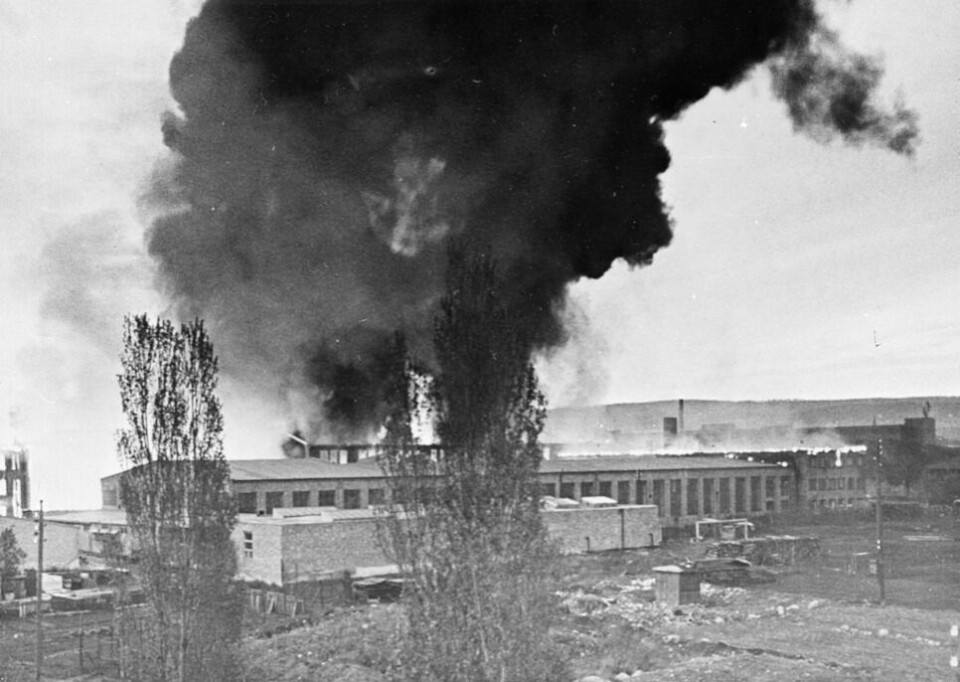
Became invisible
Terje Halvorsen firmly believes that the concealment of the Communists' resistance efforts during the war did not end there. It continued with a series created by the Norwegian Broadcasting Corporation, NRK, in the 1970s about the resistance struggle, which barely mentions the Communists and their efforts.
“Of course, there was never any overt decision to make the Communists' war efforts in Norway invisible. There was no prohibition against it. It was just in the cards that it was the way it should be,” Halvorsen said.
“People are influenced by what they get through the media. Newspapers and television provide the bulk of the information about the war to most people, not historians with their specialist books for the specially interested,” he said.
Then things changed
After the turn of the millennium, however, things begin to change.
In 2010, NRK came out with the documentary ‘Sabotører i mørke’ (Saboteurs in the dark) about the Osvald group. This is one of several films and books that in recent years have described the Communist resistance.
“The Communist resistance has now become a normal part of the great narrative about the war in Norway,” Halvorsen said.
At the same time, Asbjørn Sunde became a very controversial figure in post-war Norway.
The bank robberies he and the Osvald group conducted during the war to finance the sabotage actions made him unpopular. But Sunde was supported by the well-known Norwegian saboteur Gunnar Sønsteby and Milorg leader Jens Christian Hauge, who may have left it to the Osvald group to carry out several liquidations that Milorg itself thought were too dangerous.
In 1944, Asbjørn Sunde broke with the leadership of the Norwegian Communist Party (NKP). In 1954, he was sentenced to eight years in prison for espionage for the benefit of the Soviet Union.
After he was released in 1959, Sunde lived an anonymous life as a disabled pensioner.
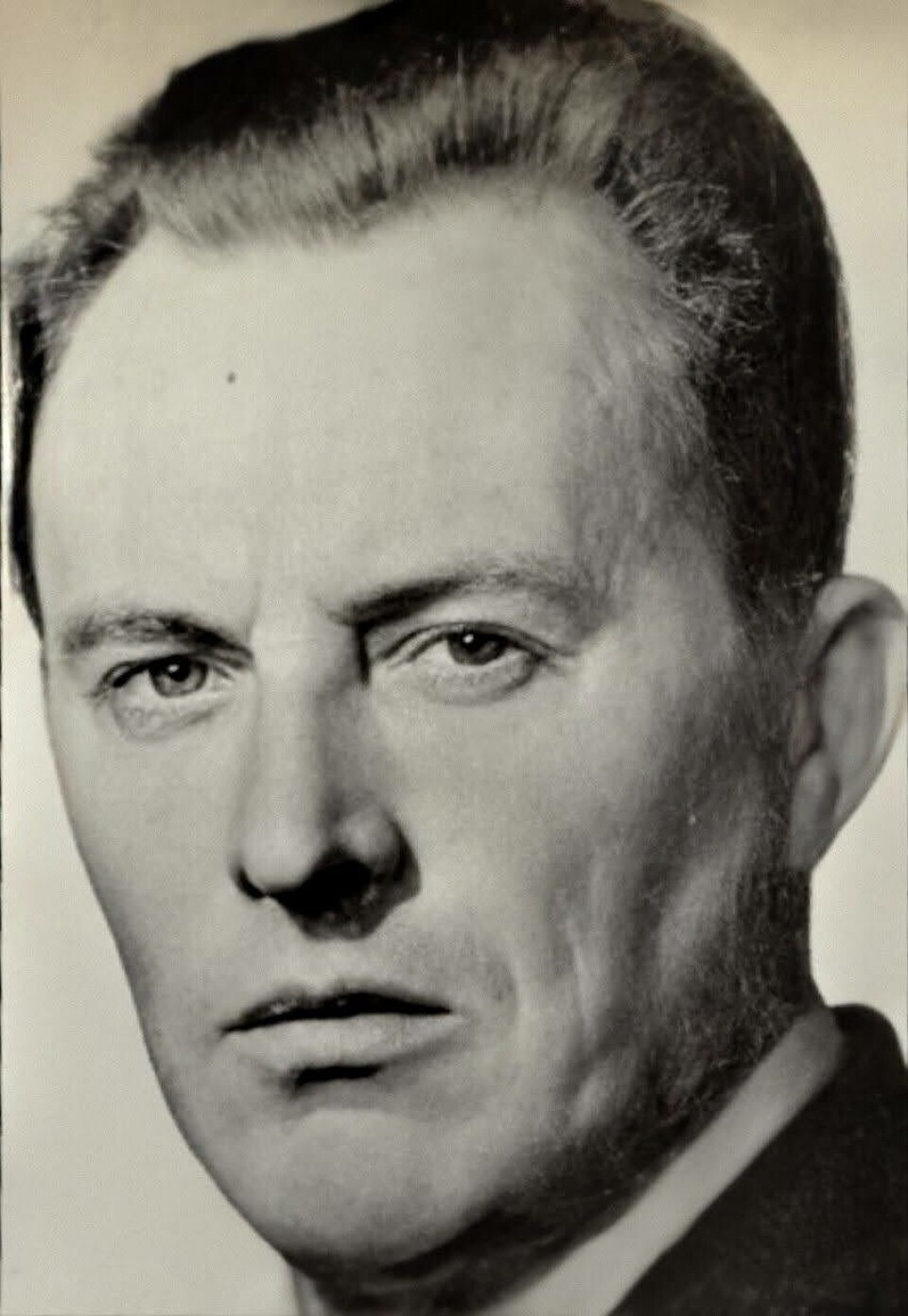
NKP's rise and fall
Much of the explanation for what happened to the Communist resistance and the oblivion they were shrouded in after the war can probably be found in the history of Norway's Communist Party (NKP).
NKP was an important party in Norway in the 1920s.
But when the war came in 1940, the party had shrunk considerably. At the general election in 1936, the NKP only received 0.3 percent of the votes from the Norwegian people.
Some of the decline of the Communists can be explained by the fact that Norway had a large social democratic party, the Labour Party, which was to the left of social democratic parties in several other countries. As a result, the Labour Party was able to attract many former Communist sympathizers.
The Communist resistance's fight against the German occupation of Norway, however, gave the NKP party a real boost when the war ended in 1945. The party's membership went from under 2,000 to more than 34,000.
In the first general election after the war, the party received a whopping 11.9 per cent of the vote and 11 representatives in the Storting, the Norwegian Parliament.
But in 1949, the NKP experienced a bitter split. The general secretary Peder Furubotn, who had played a central role in the Communist resistance during the war, was excluded from the party. At the same time, the Cold War between the Soviet Union and the West was underway.
The NKP was never able to increase its support among the Norwegian people again.
Sabotage in Mjøndalen
Historian Lars Borgersrud has written a number of books about the Communist saboteurs in Norway during the war.
Borgersrud published the book "Ryghkollen - et øyeblikk av krigen” (Ryghkollen — a moment in the war) in 2020 with Ulf Normann Olsen. The book describes what happened on 7 October 1943, when the Osvald group blew up a train with German soldiers at Ryghkollen in Mjøndalen, along the banks of the Drammen river.
One of the German troop transport cars ended up in the river, with one train car halfway down in the river and a third on the slope. No one knows how many died, because the Germans kept this a secret. But according to Asbjørn Sunde's book "Menn i mørket” (Men in the Dark), approximately 70 German soldiers were killed.
The Germans shot five local people in Mjøndalen as revenge.
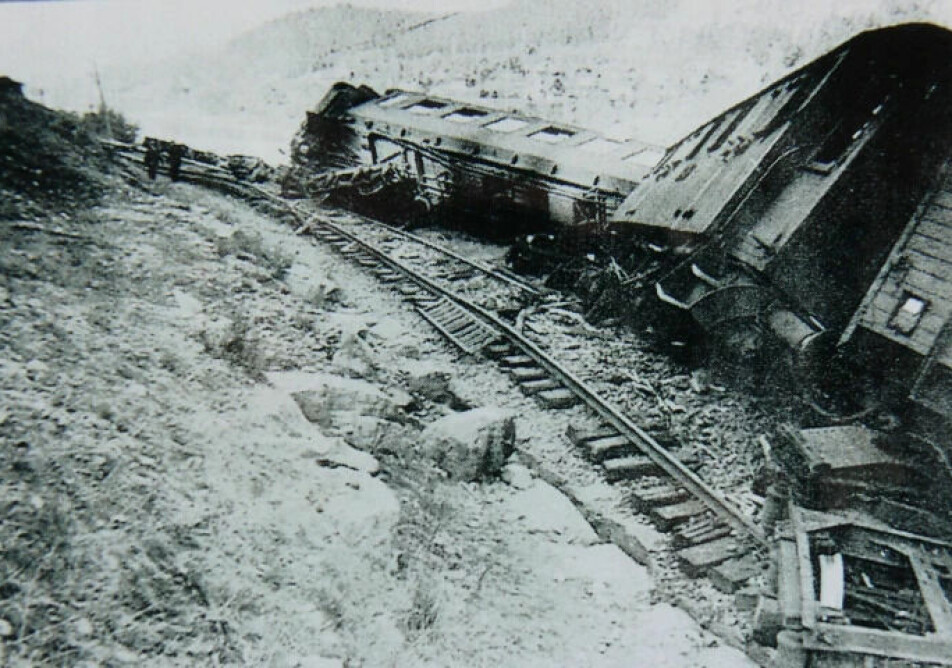
A turning point?
“As we see in the Ukraine war, all wars have important turning points,” said Borgersrud during the seminar at Norway’s Resistance Museum. “In our book, Olsen and I raise the question of whether the sabotage at Ryghkollen in Mjøndalen was precisely this kind of turning point during the war in Norway.”
“This was a spectacular act of sabotage and probably the most flawless train sabotage in Norway during the entire war. No Norwegians were killed, no saboteurs were caught,” he said.
Borgersrud believes that the action nevertheless caused the Milorg management and the Norwegian government in London to react sharply against the saboteurs. At the same time, the British sabotage organization SOE was not opposed to this action under the auspices of the Communists.
“SOE had essentially given up on the Norwegian attitude. Even the Ryghkollen sabotage raised no problems for the SOE,” he said.
“Instead, the SOE had simply stopped trying to understand what the Norwegian Resistance was actually doing,” Borgersrud said.
"The Norwegian government's radio broadcasts weaken the Norwegian Resistance's morale, undermine British policy and create the impression that a 'soft passivity' is the hallmark of a good Norwegian 'jøssing' (a Norwegian resistance fighter)," SOE wrote in a report from its Stockholm office.
The Americans were at least as critical of the situation in Norway as the British, Borgersrud said.
Why should Norway be shielded?
“On 29 March 1944, SOE wrote that they could not understand why Norway should be shielded from sabotage that was being asked for in France, Holland, Belgium and Denmark. After all, Norway had extensive industrial exports to Germany,” Borgersrud said.
“The SOE also wrote that Milorg had extremely questionable value as a fighting force. The report from the Stockholm office said the group needed to be active to shake the organization out of its current apathy. They wanted a joint resistance leadership in Norway, as was the case in Denmark,” he said.
This is how the sabotage in Ryghkollen put active resistance on the political agenda, Borgersrud believes.
He said there was a real danger in 1944 that many resistance fighters organized in Milorg would go over to the Communist part of the resistance force in Norway.
The home front had to be activated
Activation became the only possibility to keep Milorg under control, Borgersrud said.
In 1944, the fight against registering Norwegian youth for forced labour, through destroying the registers of the German-controlled Norwegian employment offices, was a great success for Milorg. This was undoubtedly the resistance movement's biggest victory during the entire war, Borgersrud believes.
“When the Germans capitulated in 1945, it was a completely different Milorg that had gained control. They had changed their name to the Home Force. Everyone had then become supporters of sabotage and of active resistance,” he said.
“Never during the war in Norway were there as many acts of sabotage and liquidations as during the short winter weeks leading up to the capitulation in May 1945,” he said.
A paradox
Borgersrud believes that one of the great paradoxes of the war is that while the active resistance policy won and became the concept of The Norway that fights, the organizations that had worked for this policy were losers to the bourgeois part of the resistance movement after the war.
On the eve of the war, the German Gestapo had also been very successful in their work of crushing the NKP's military groups.
The last remaining of them surrendered in 1945 to the Home Forces Command.
The divisions within the NKP and the resistance groups did not make it any easier for the Communists.
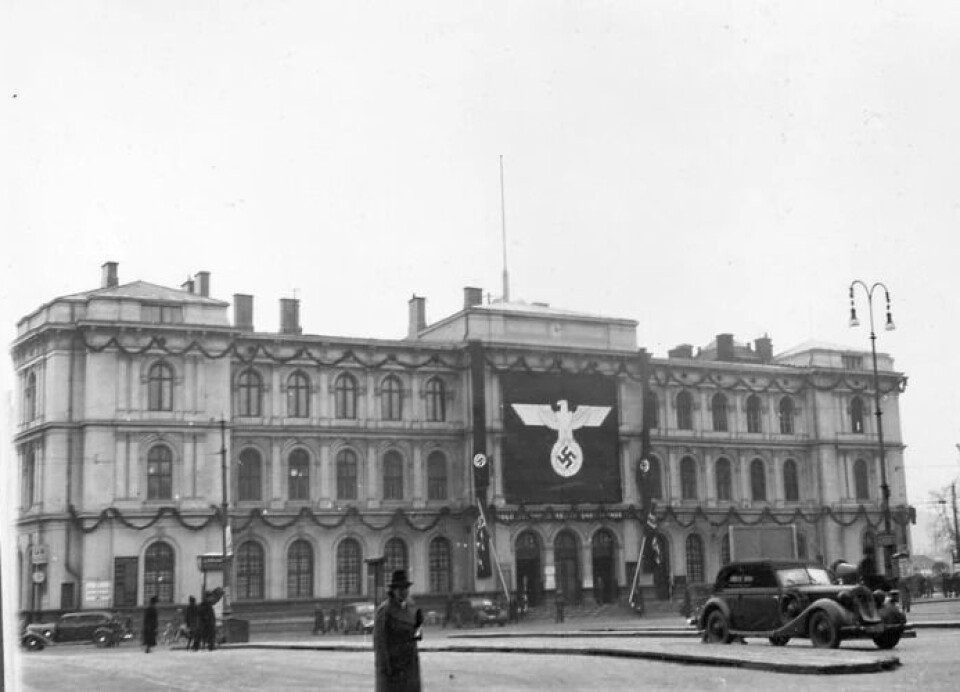
The illegal press
Frode Færøy, who is a researcher at Norway’s Resistance Museum at Akershus Fortress, has investigated the extensive illegal Norwegian press during the war.
More than 300 illegal magazines were published, the largest with a circulation of 5,000–6,000.
The ‘Bulletinen’ (the Bulletin), which was connected to the Norwegian Resistance's leadership, ‘London-nytt’ (London News) and the NKP-affiliated ‘Alt for Norge’ (All for Norway) and ‘Friheten’ (Freedom) became particularly famous.
Between 3,000 and 4,000 people were arrested for writing or distributing illegal newspapers in Norway during the war, according to Færøy.
Of these, 62 were executed and 150 died in captivity.
Hard battles in the illegal media
The illegal press didn’t just target the occupying power. Here, fierce battles were also fought between the Communists and other groups in Norwegian politics.
In the Communist publication All for Norway, what was called a combative Norwegian population was pitted against the "incompetent and irresponsible political and military leadership" of the resistance.
“This was a powerful message, and the NKP leadership made the Norwegian Resistance leadership a target for their propaganda,” Færøy said during the seminar.
German action created divisions
In early February 1944, the Germans took police action against a total of eight underground newspapers in the Oslo area. Many of the employees were arrested or had to flee. However, the effort did not affect any of the Communist newspapers.
Not long after, allegations emerged that the Communists had caused the German purge through informants.
“Although the Norwegian Resistance leadership had no doubt that this was German propaganda, the Communists were accused in letters and reports of exploiting the situation,” Færøy said.
“It’s not difficult to understand why central resistance leaders reacted strongly to the attacks they were exposed to through the Communist newspapers after they themselves were left without functioning illegal newspapers,” Færøy said.
It was also crucial for the leadership of the Norwegian Resistance to assure the Norwegian population that it was they who would ensure an immediate and full restoration of democracy, people's rule and freedom of speech in Norway after the war. Not the Communists.
Translated by Nancy Bazilchuk
Reference:
Store norske leksikon: Sabotasje i Norge under andre verdenskrig. (Sabotage in Norway during the Second World War), written by Frode Færøy (in Norwegian)
———
Read the Norwegian version of this article at forskning.no
_ _ _








